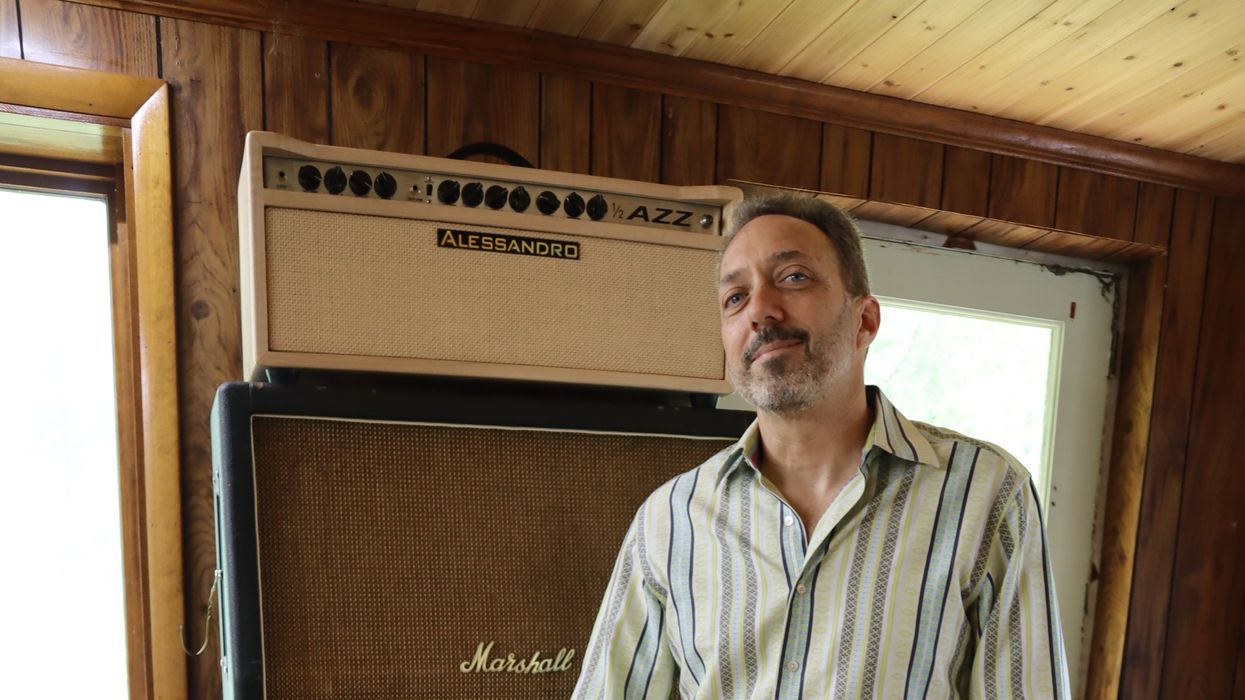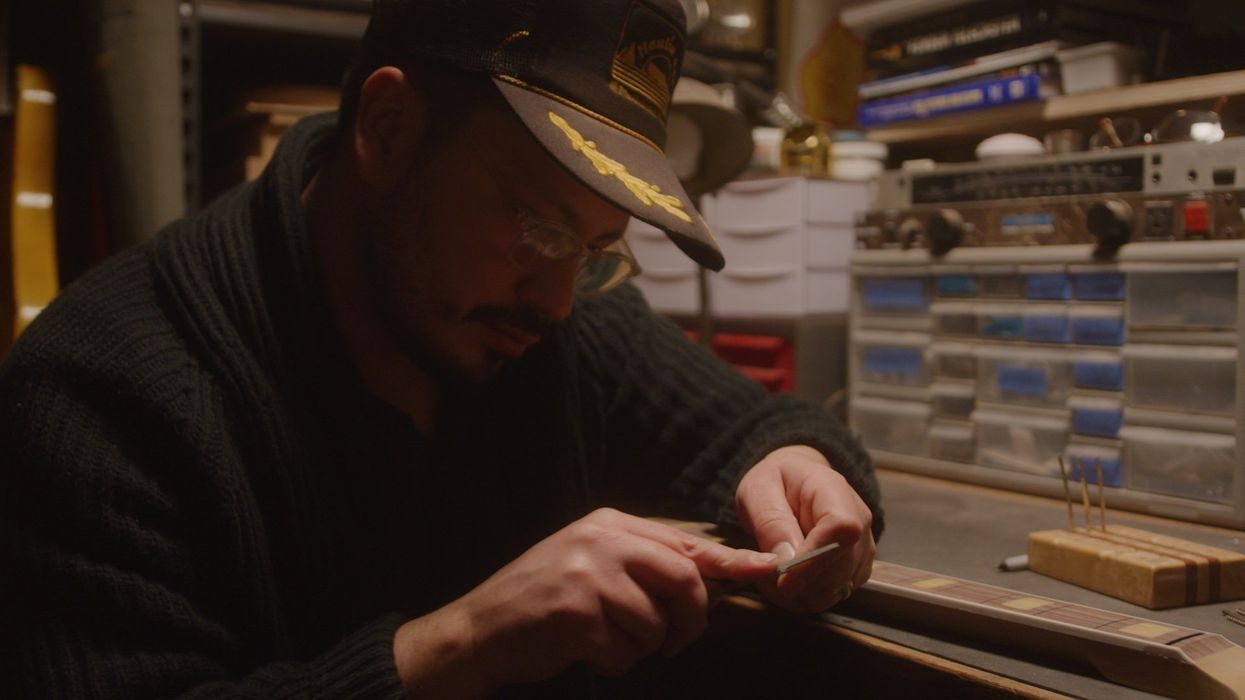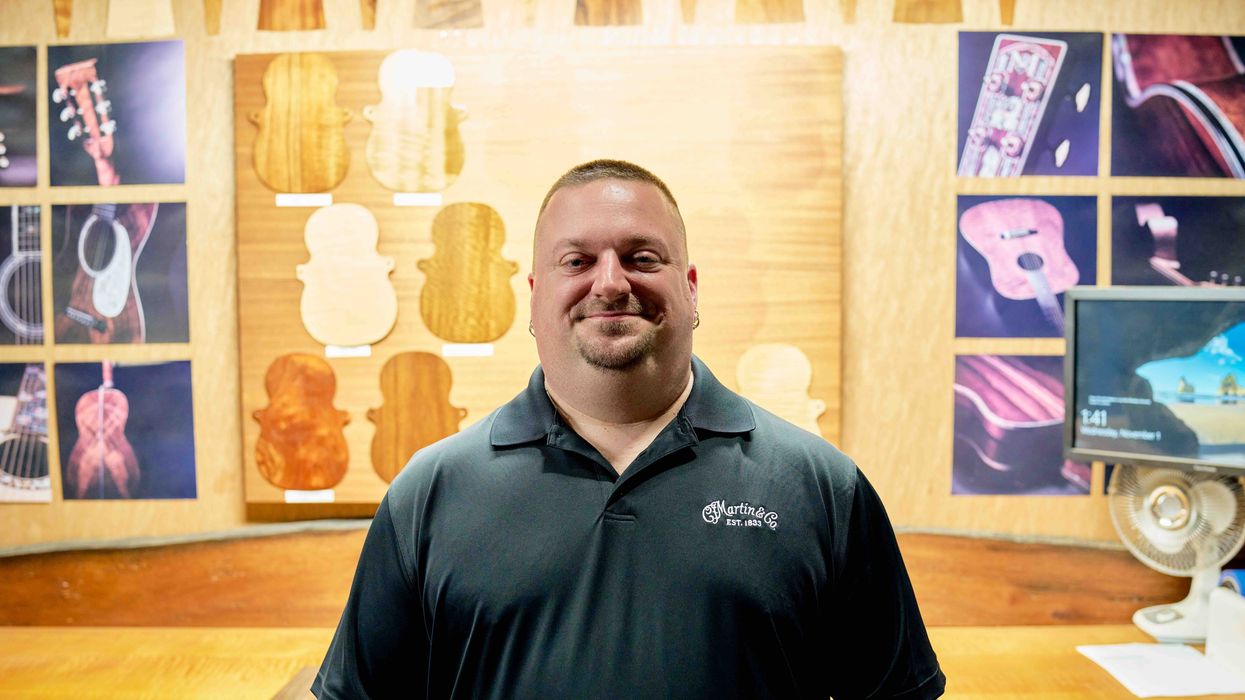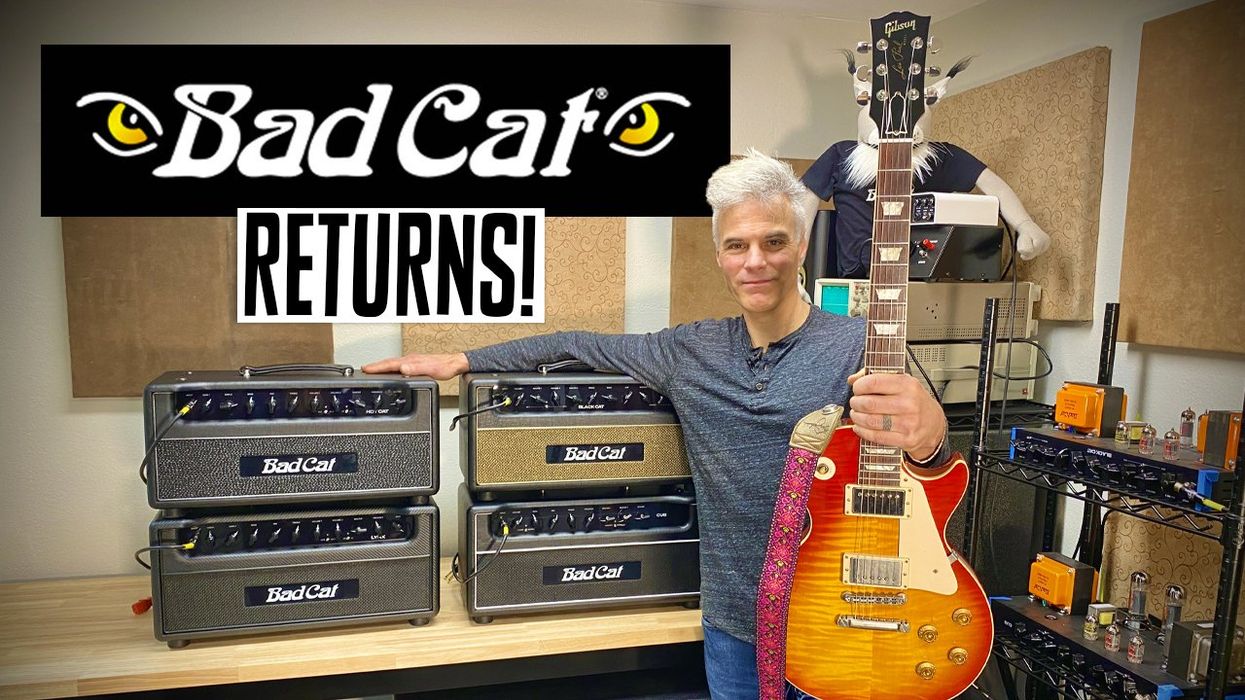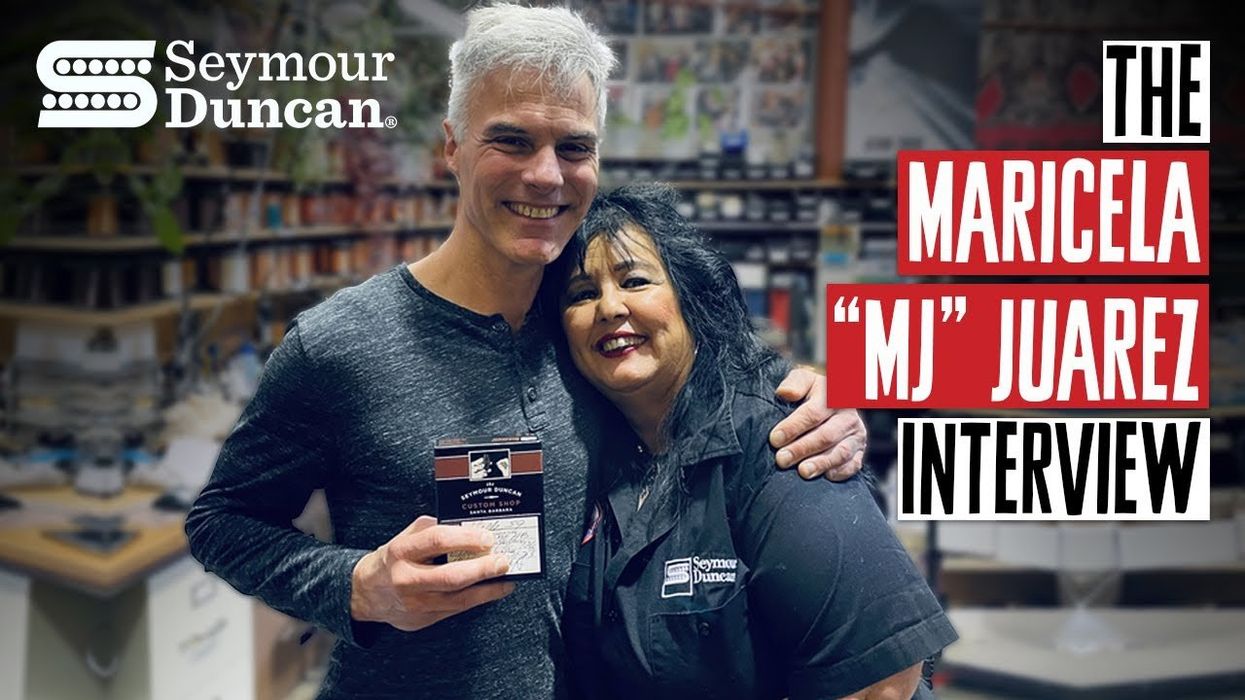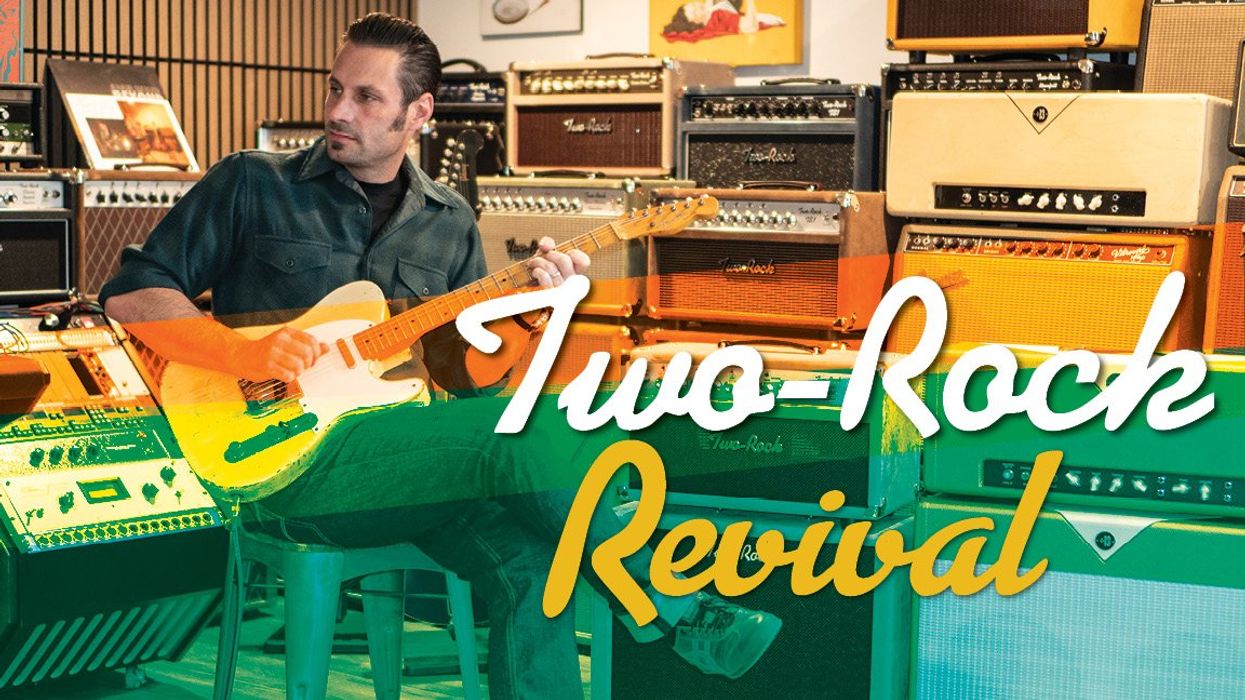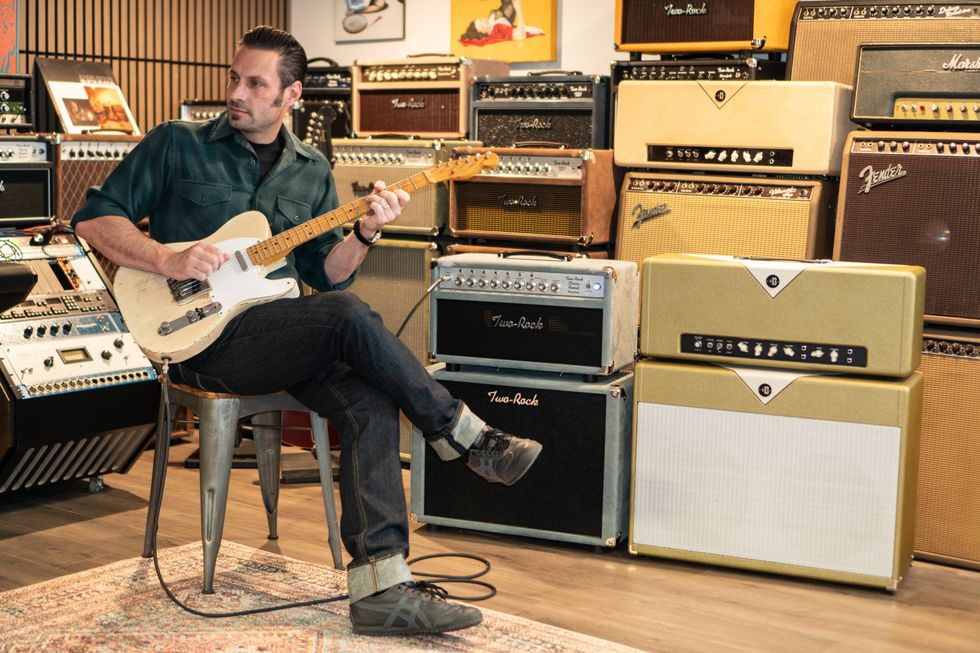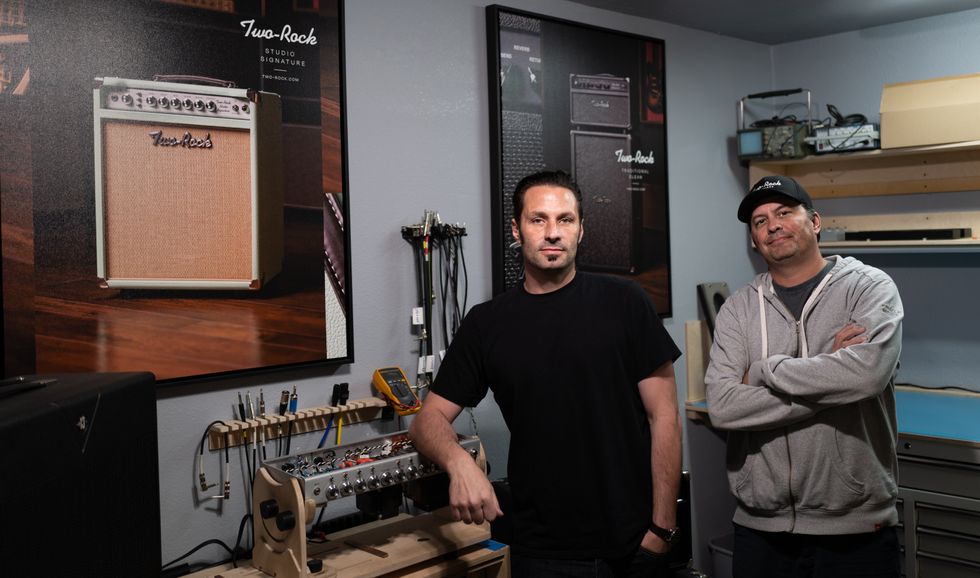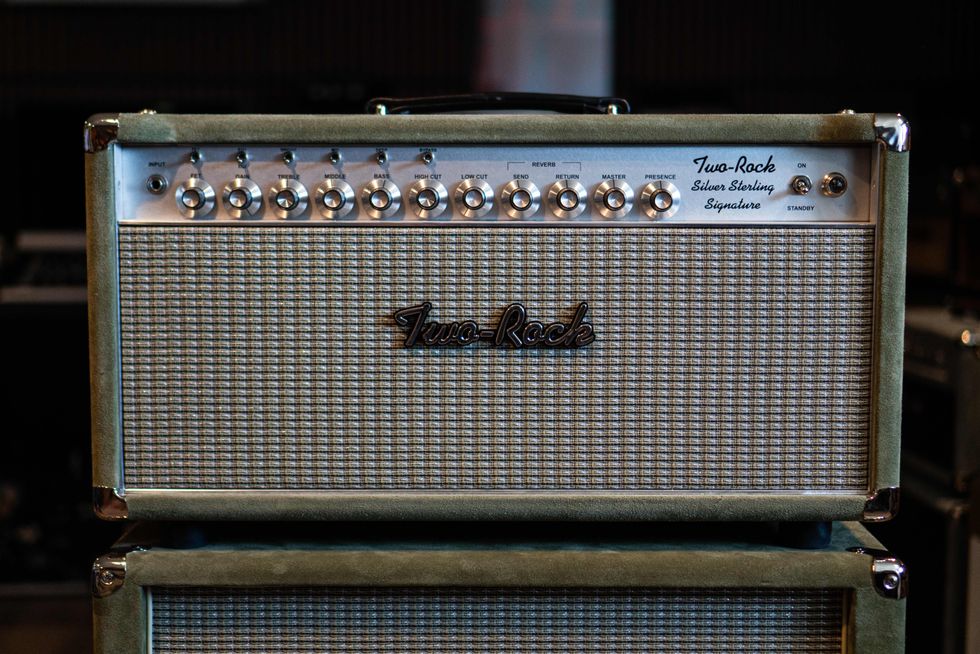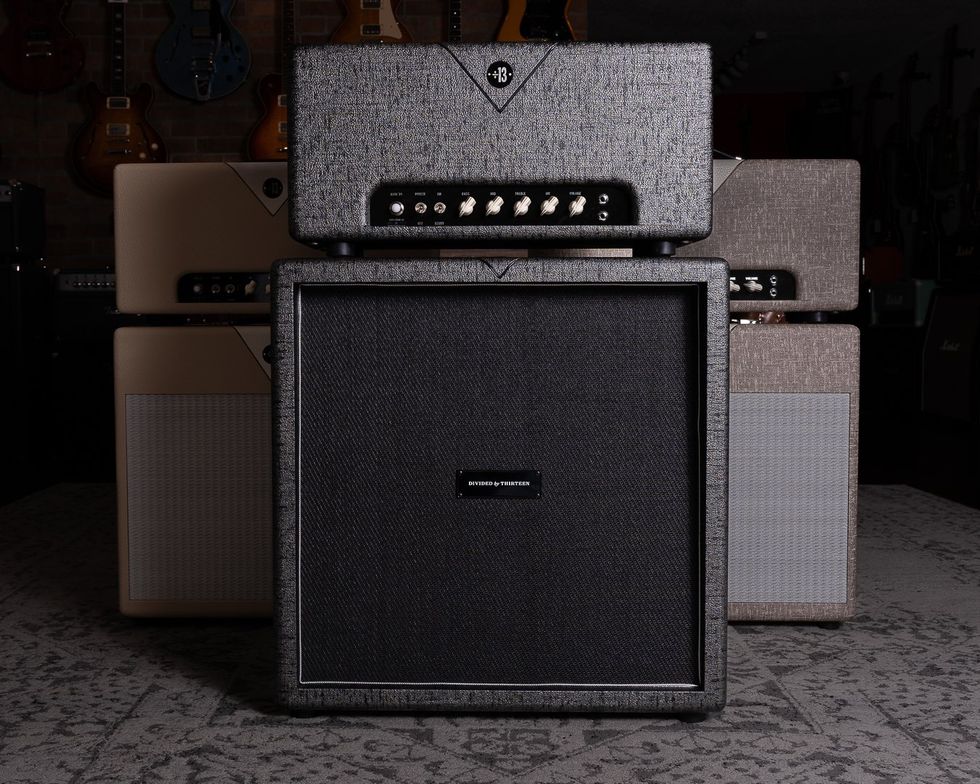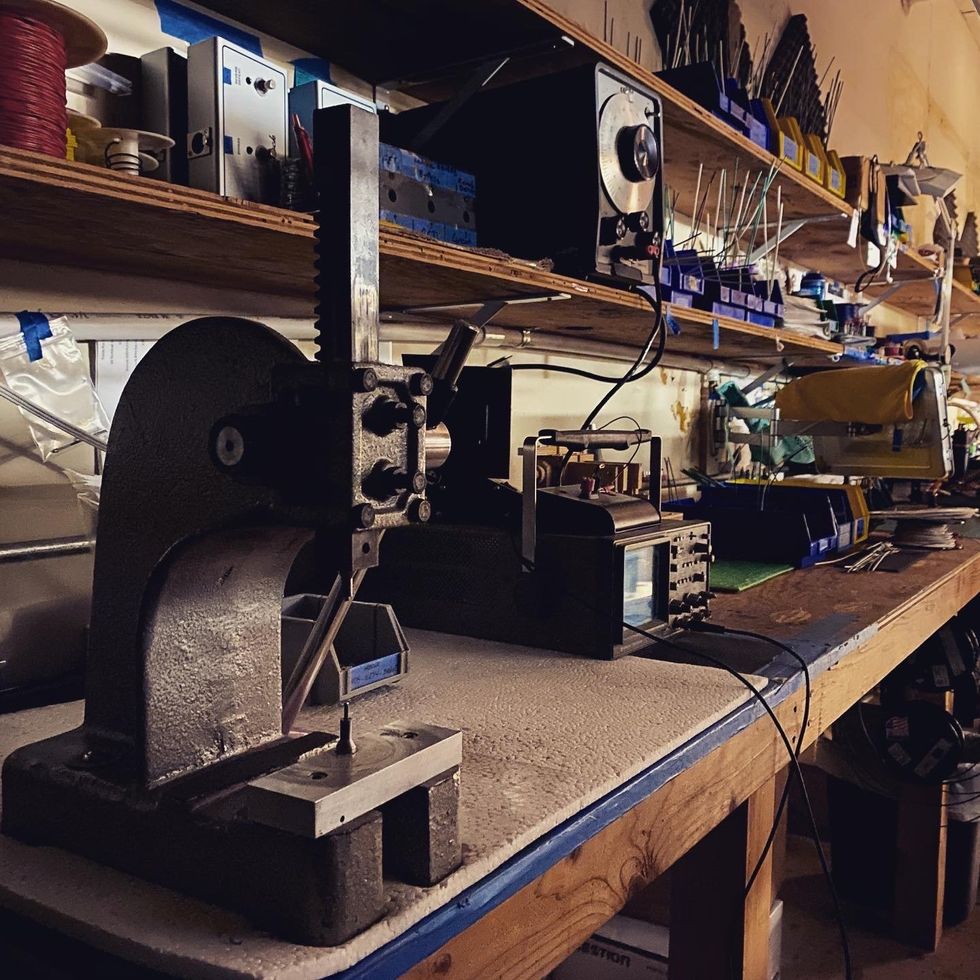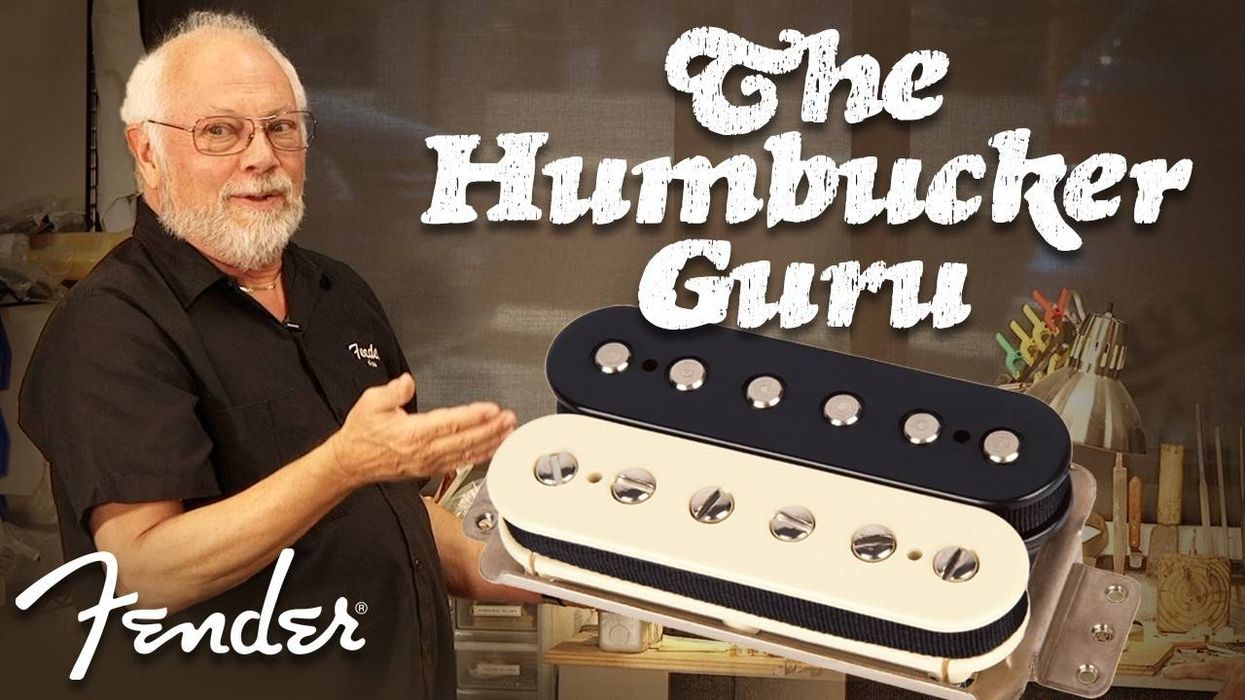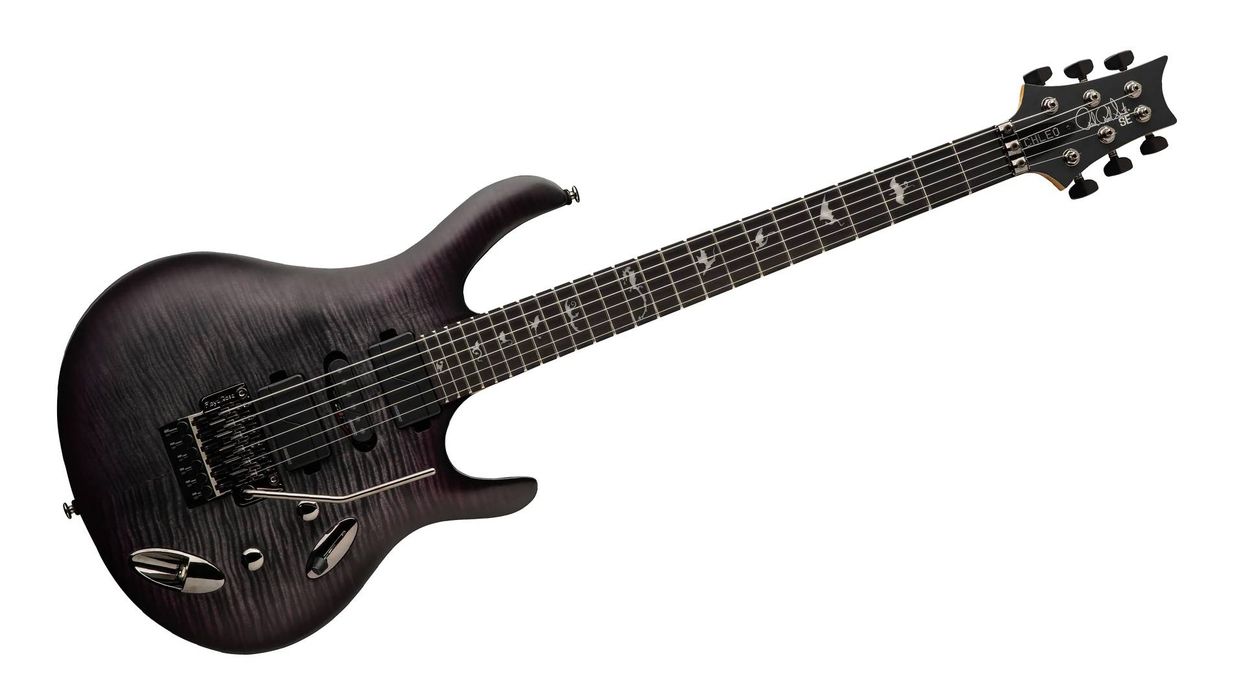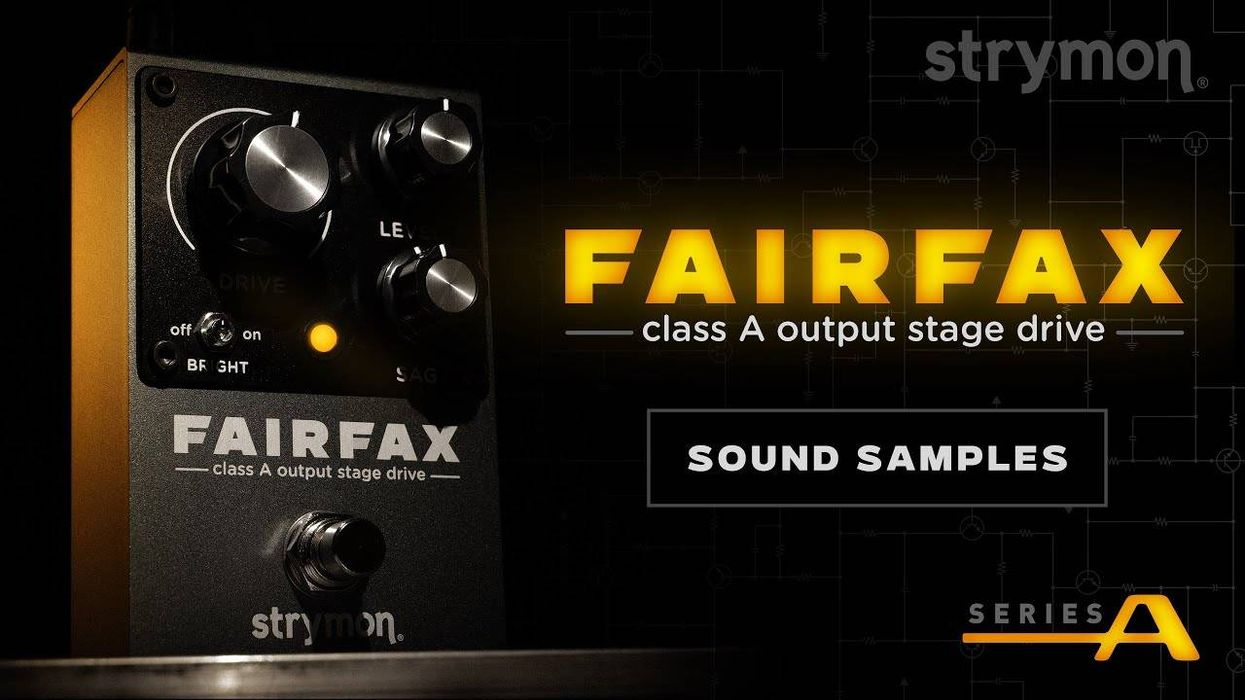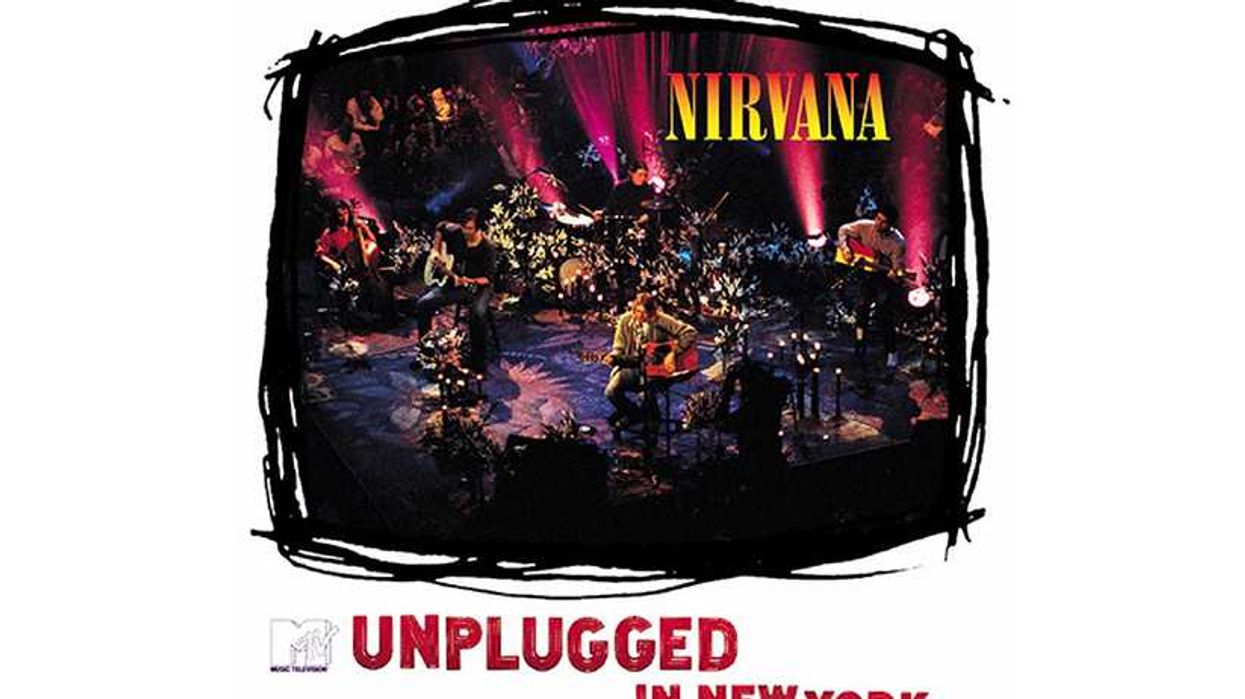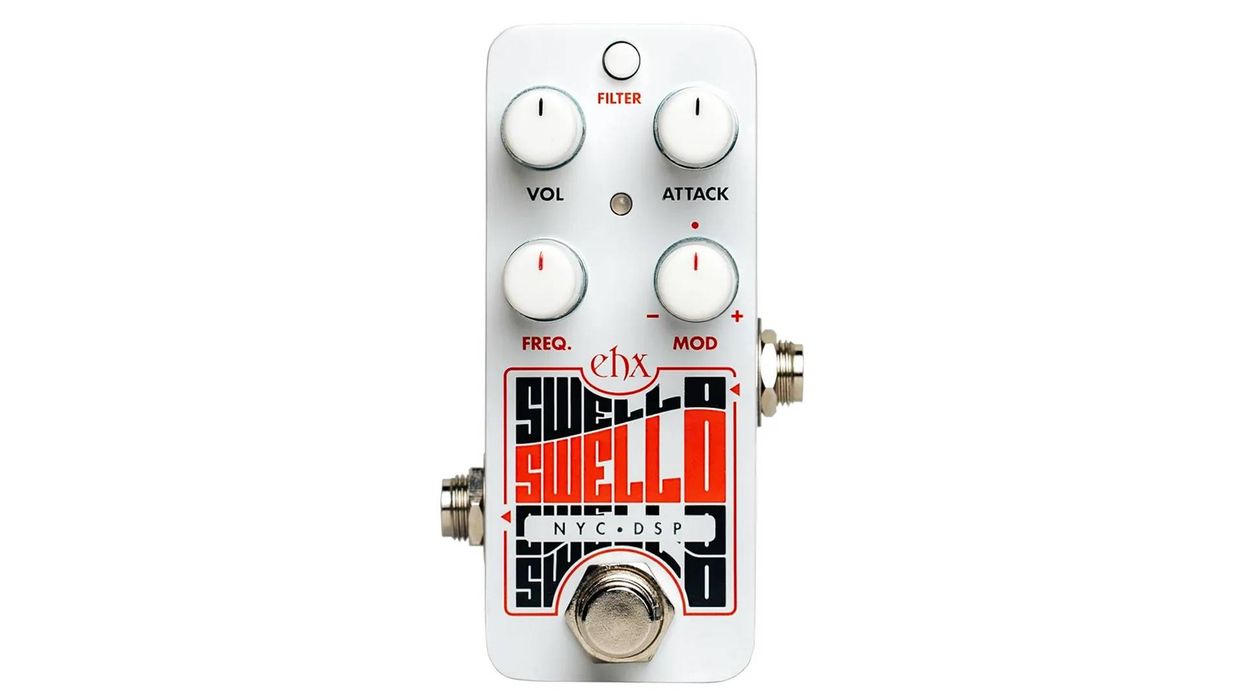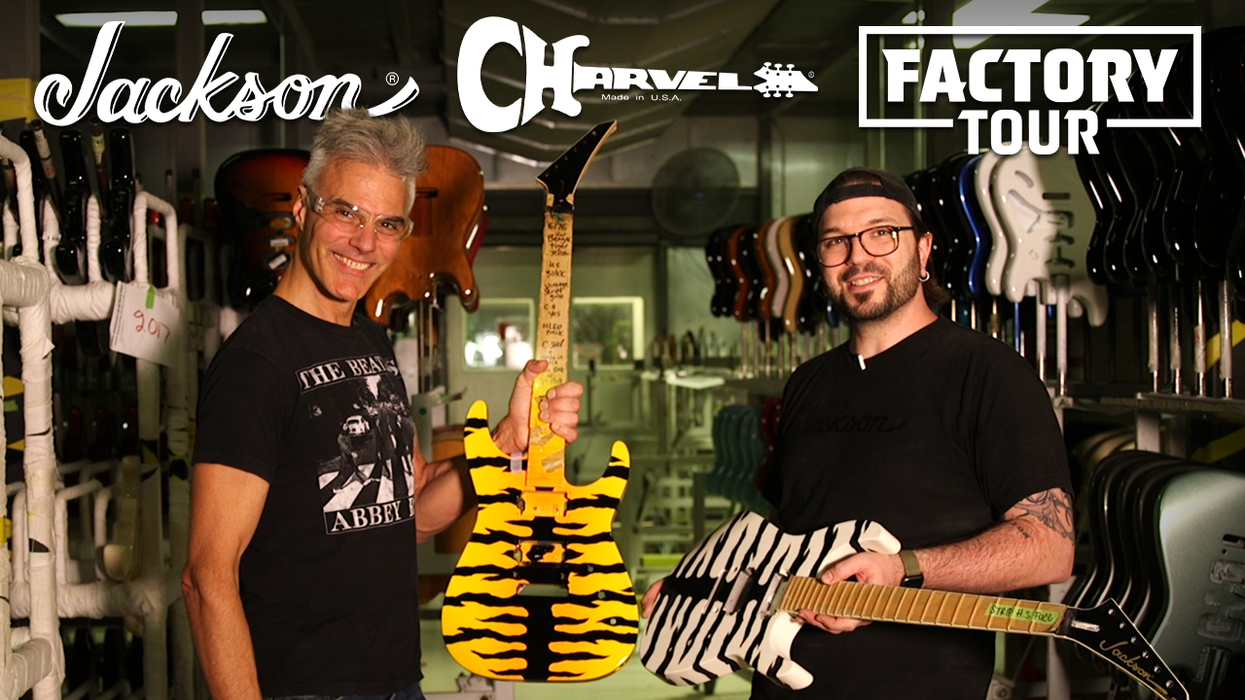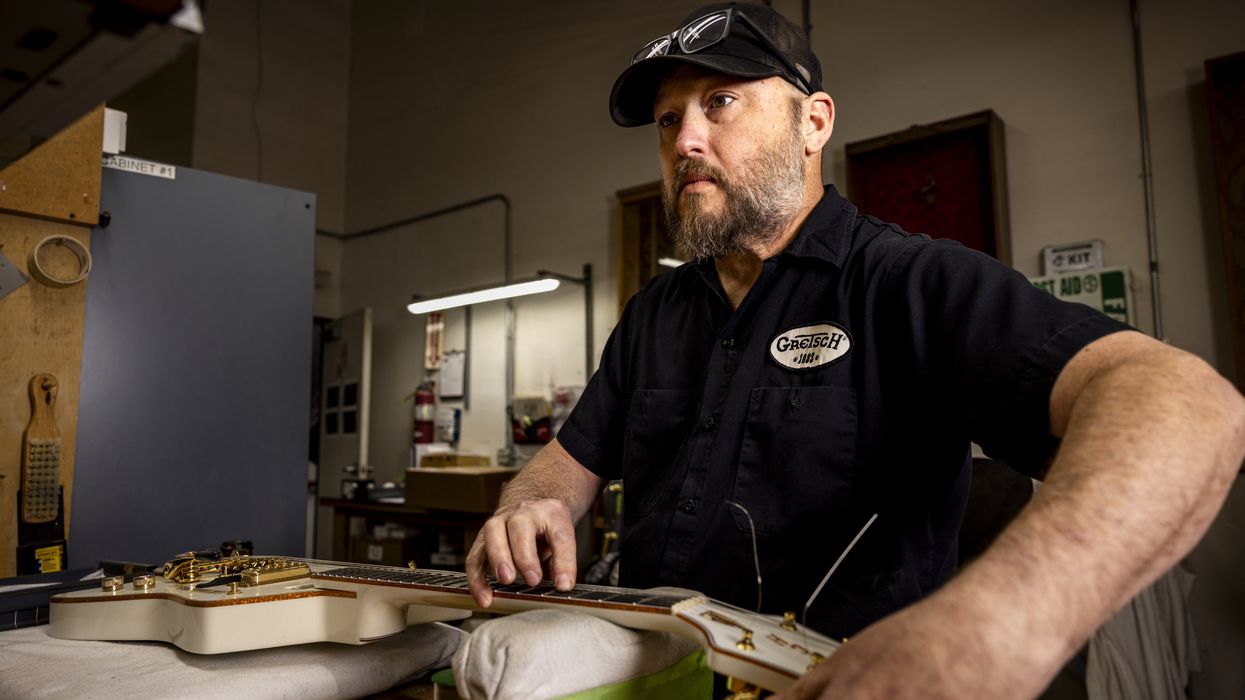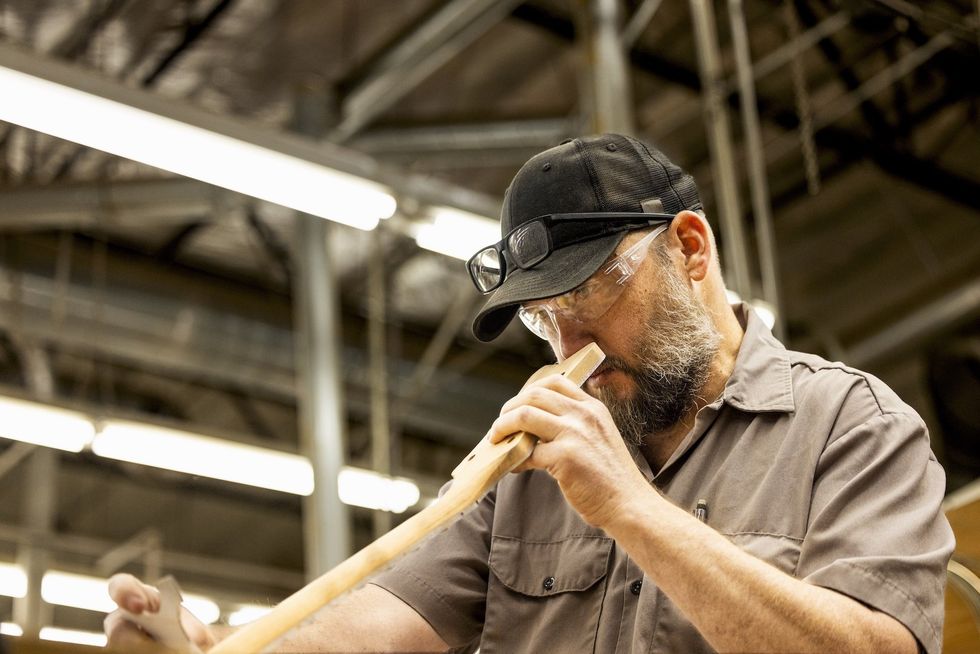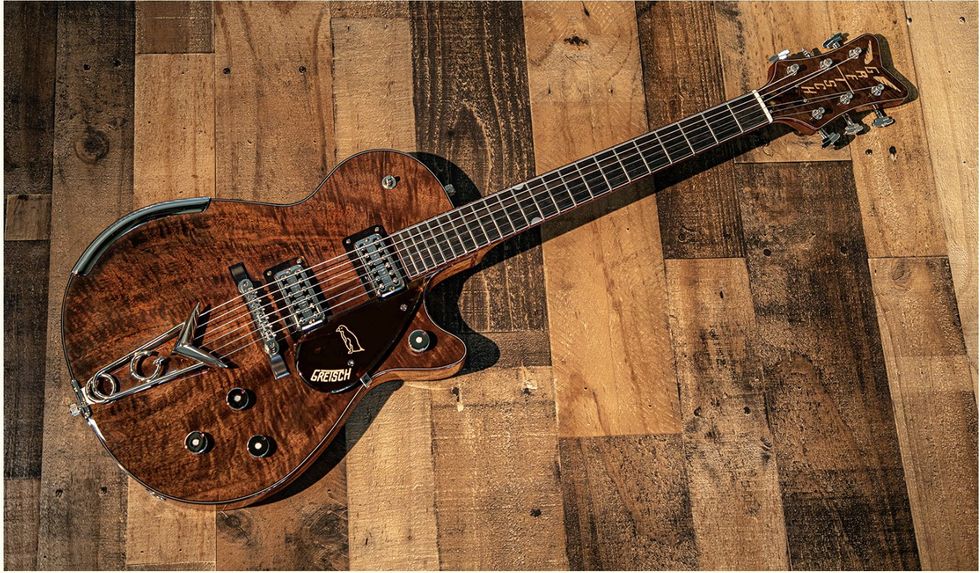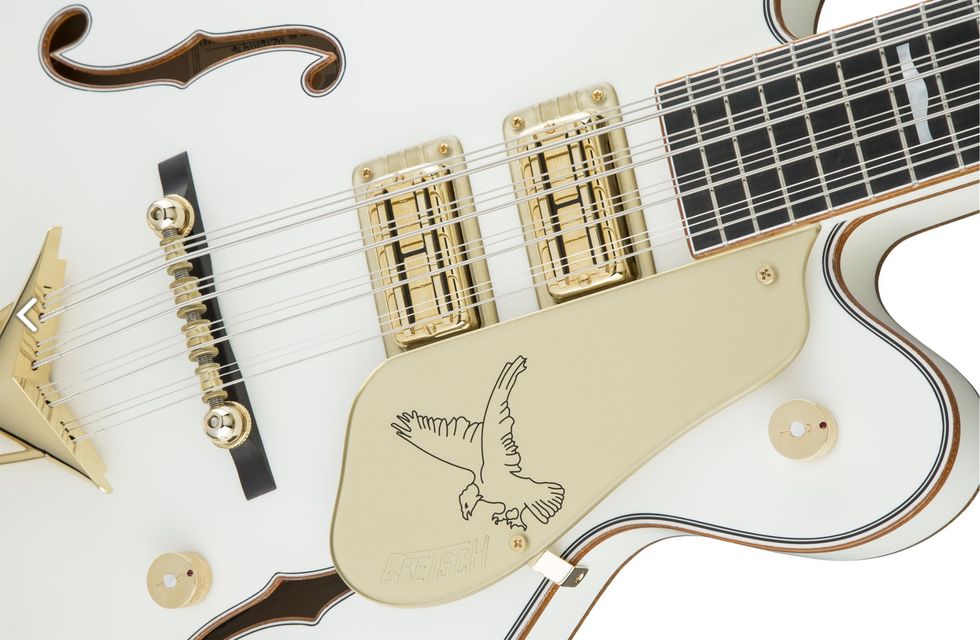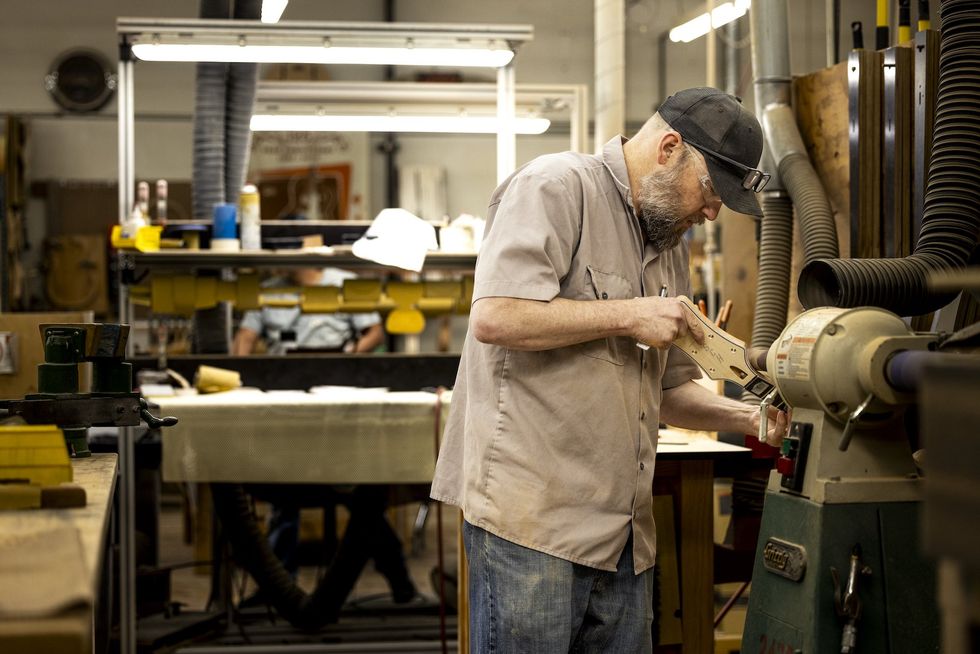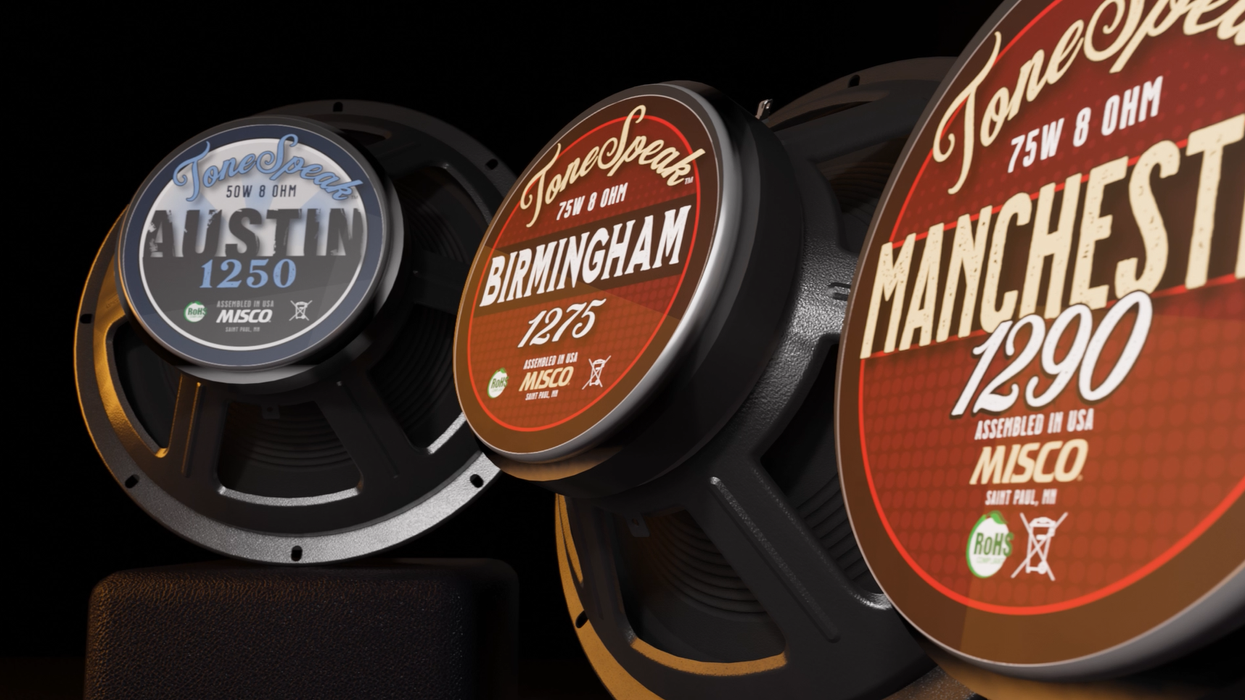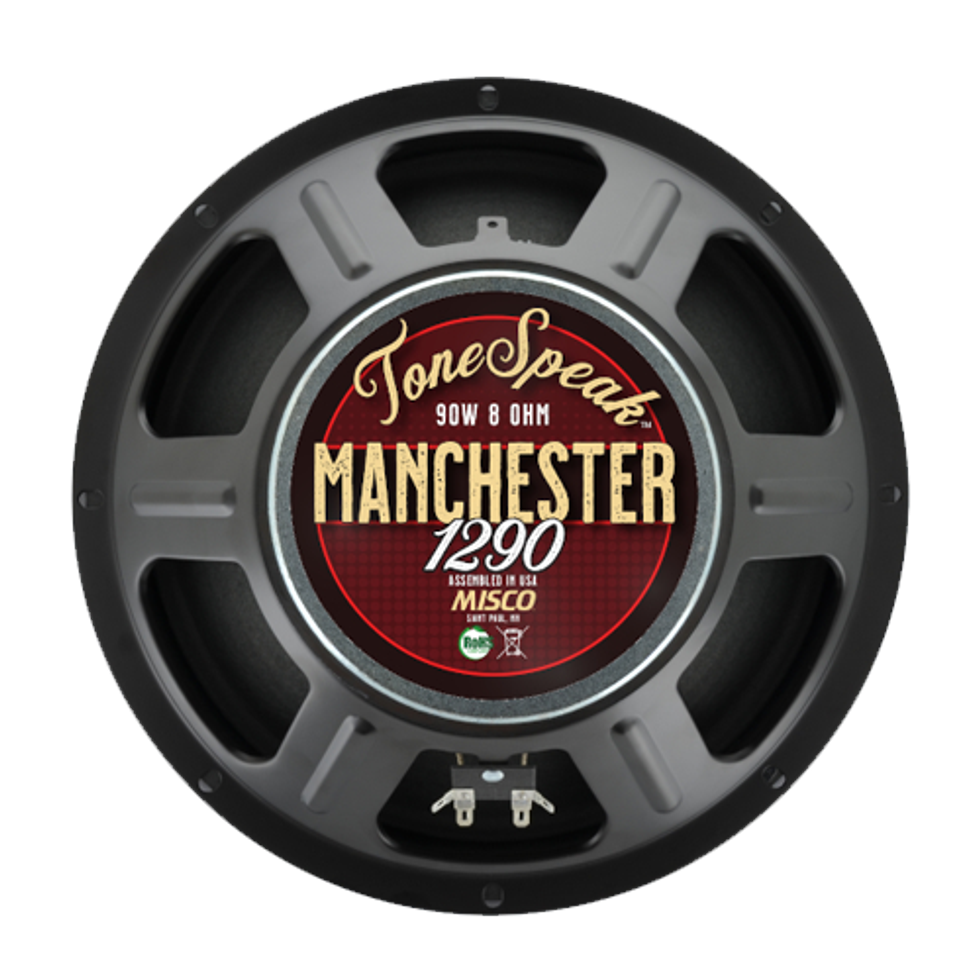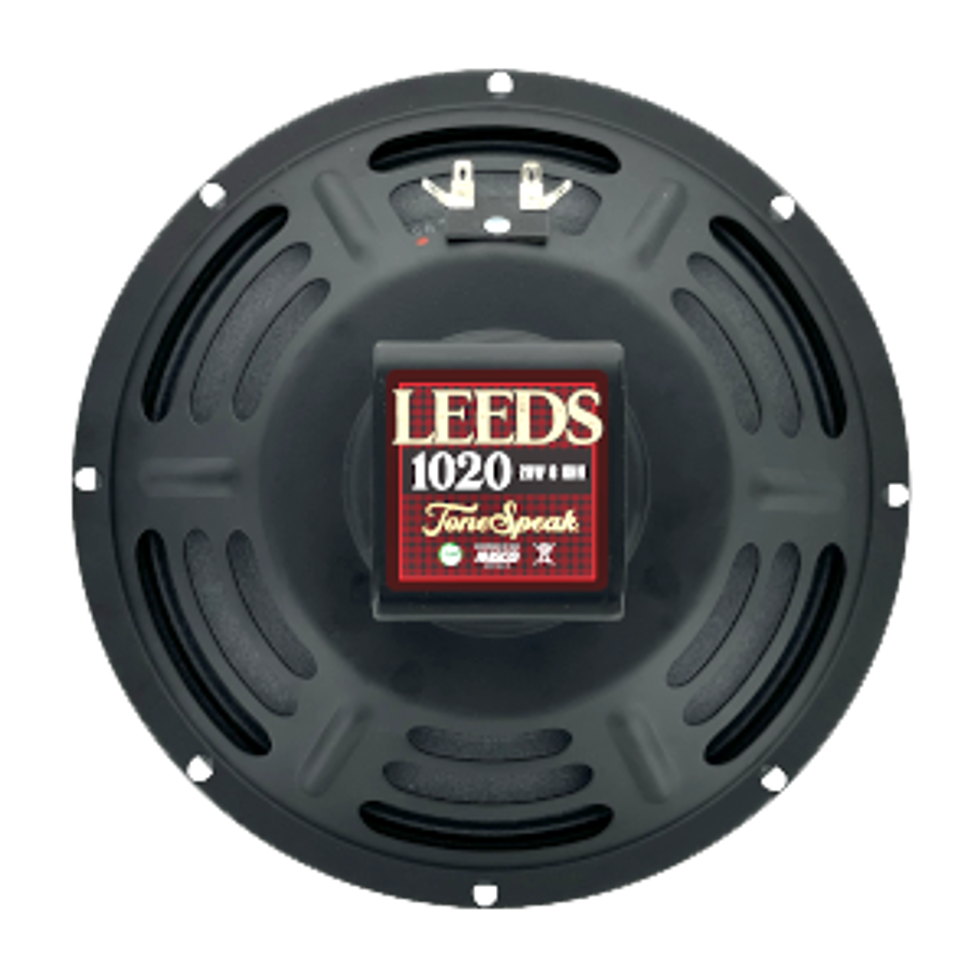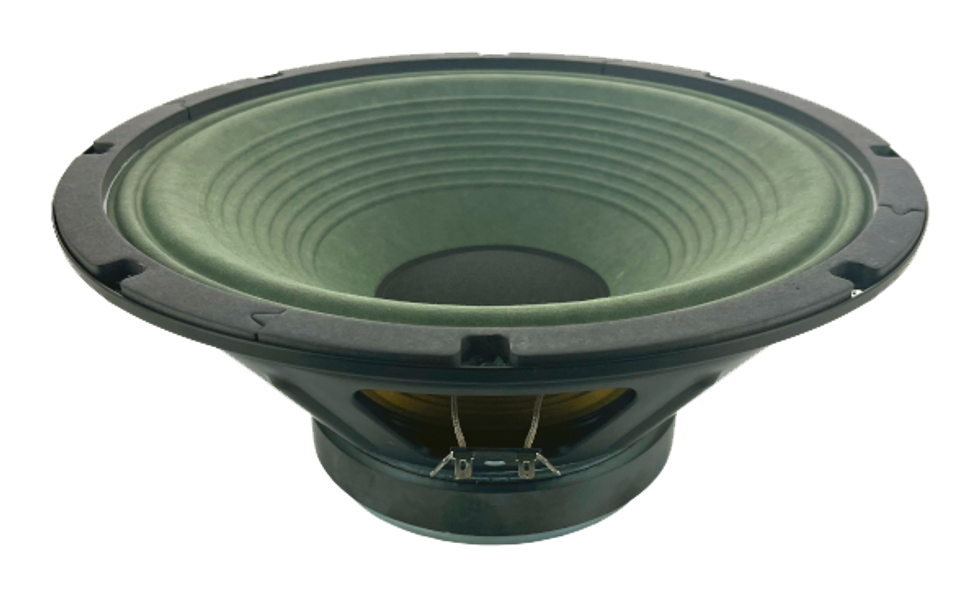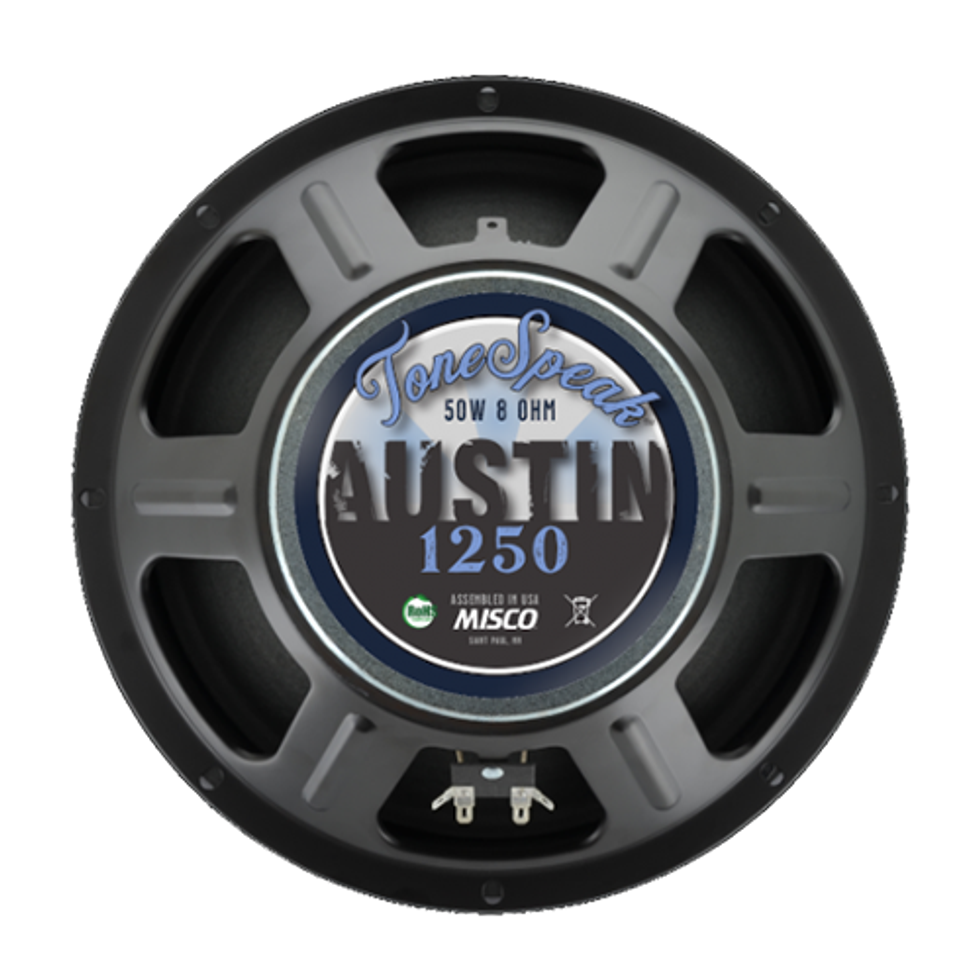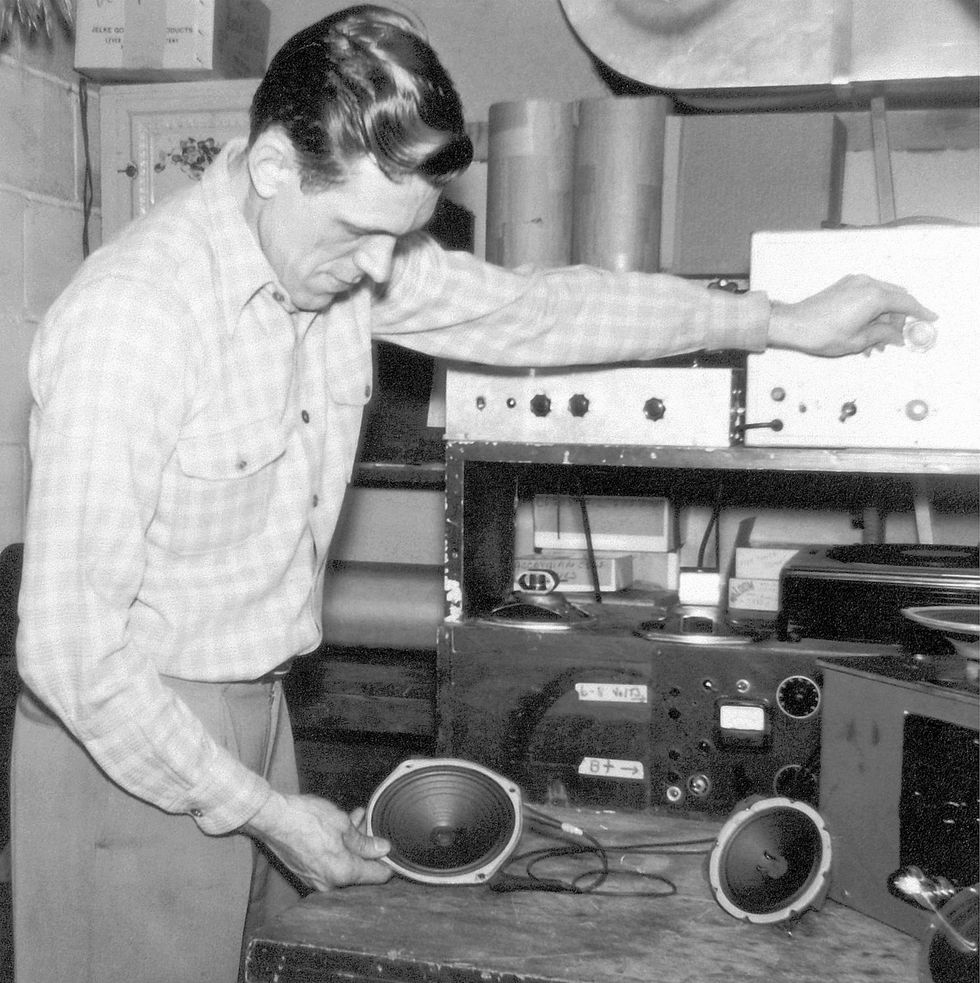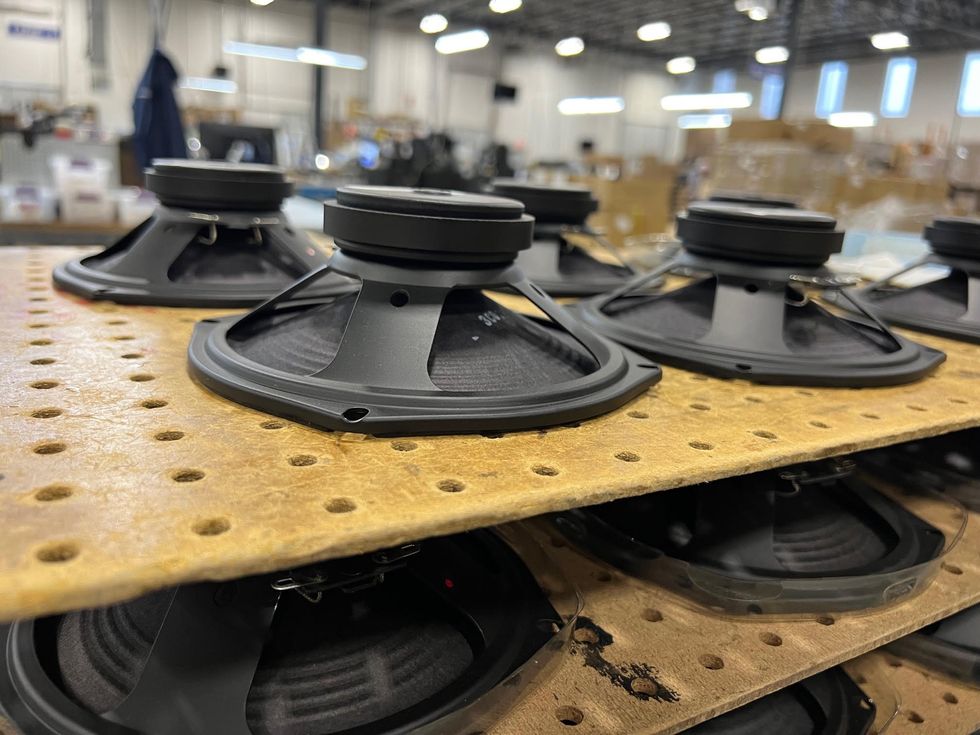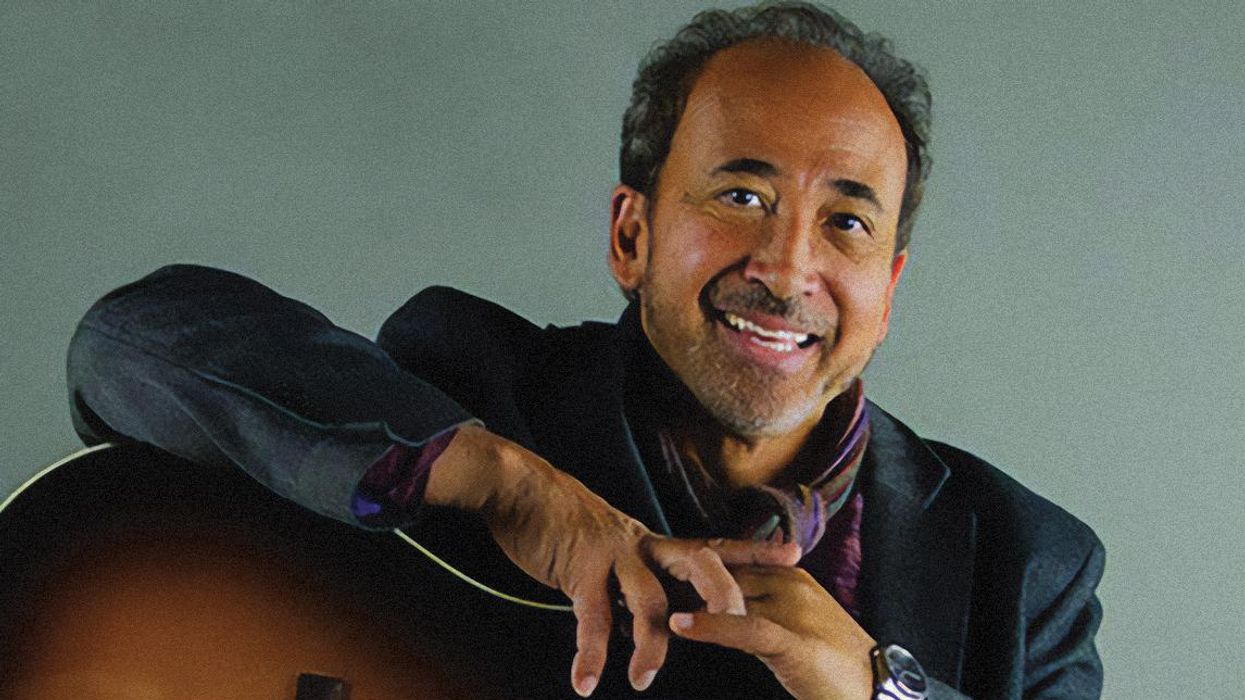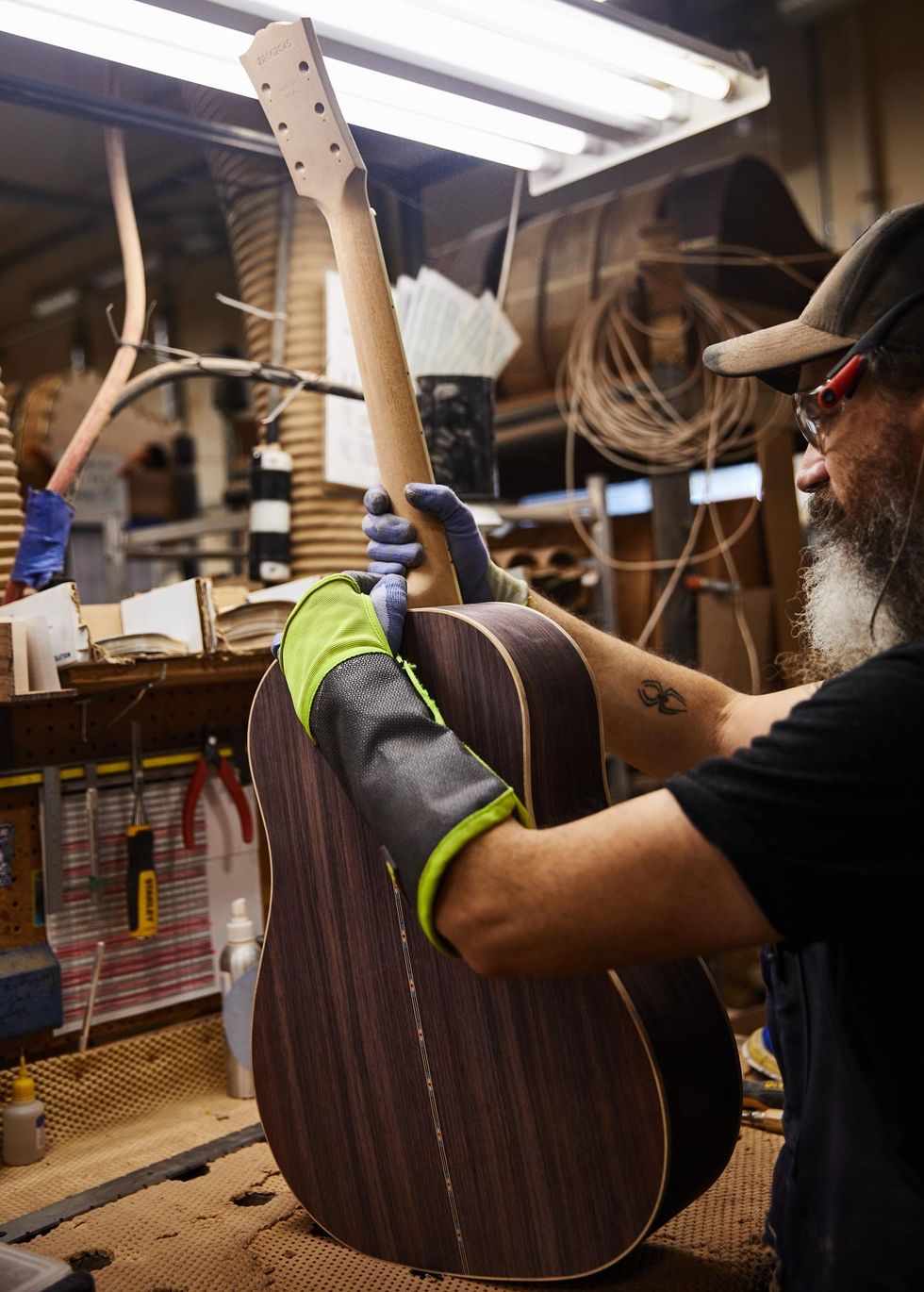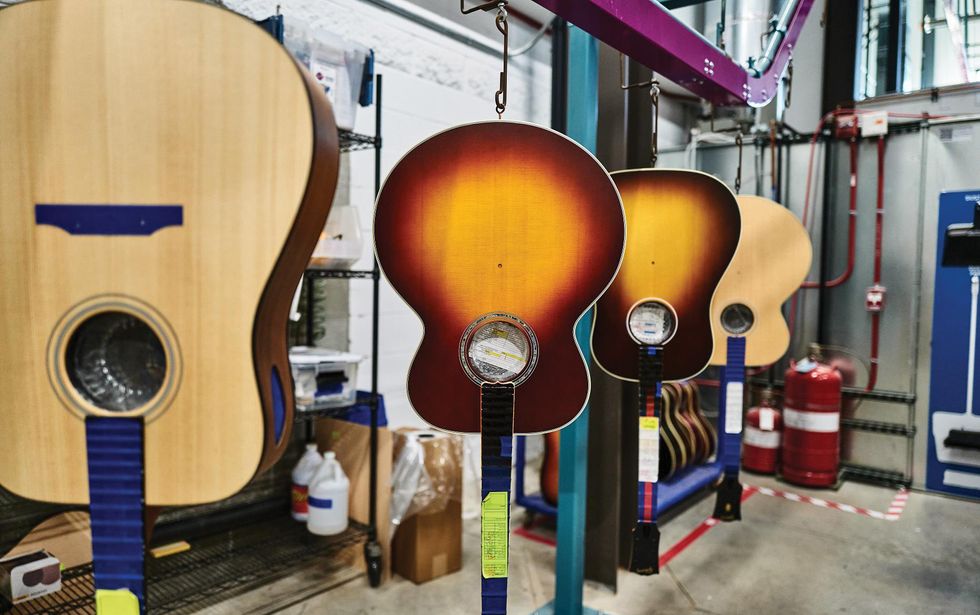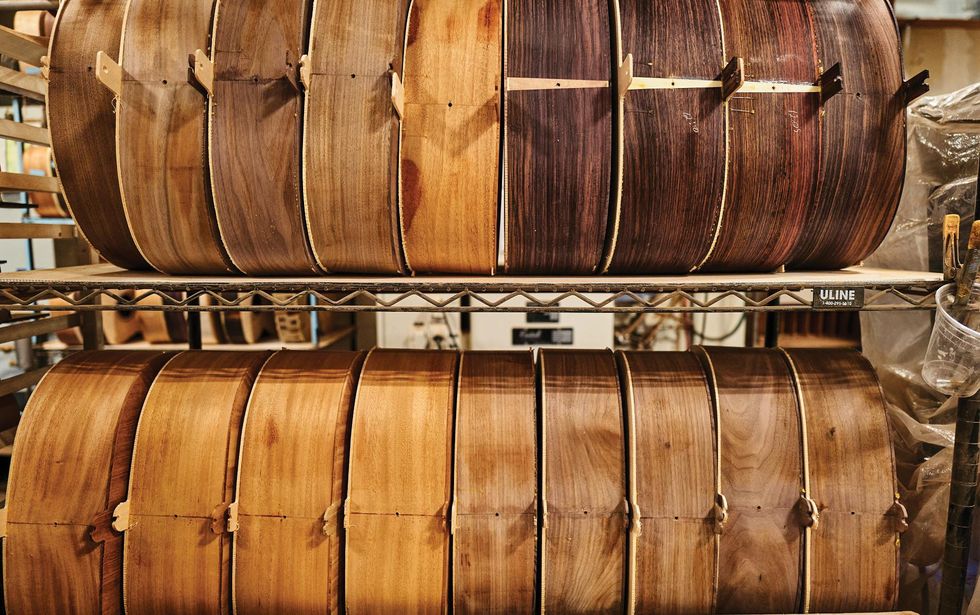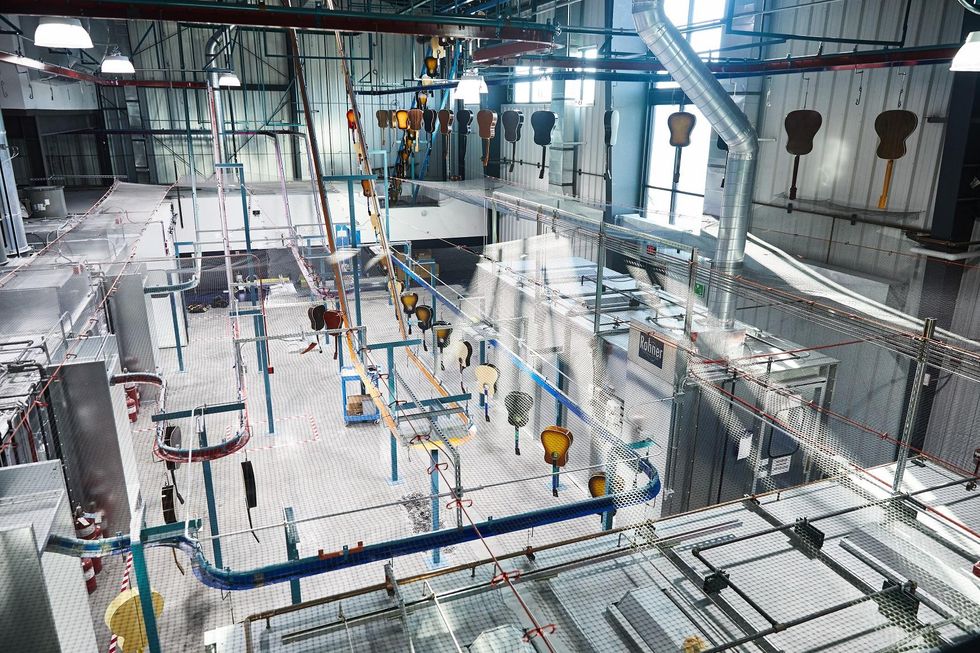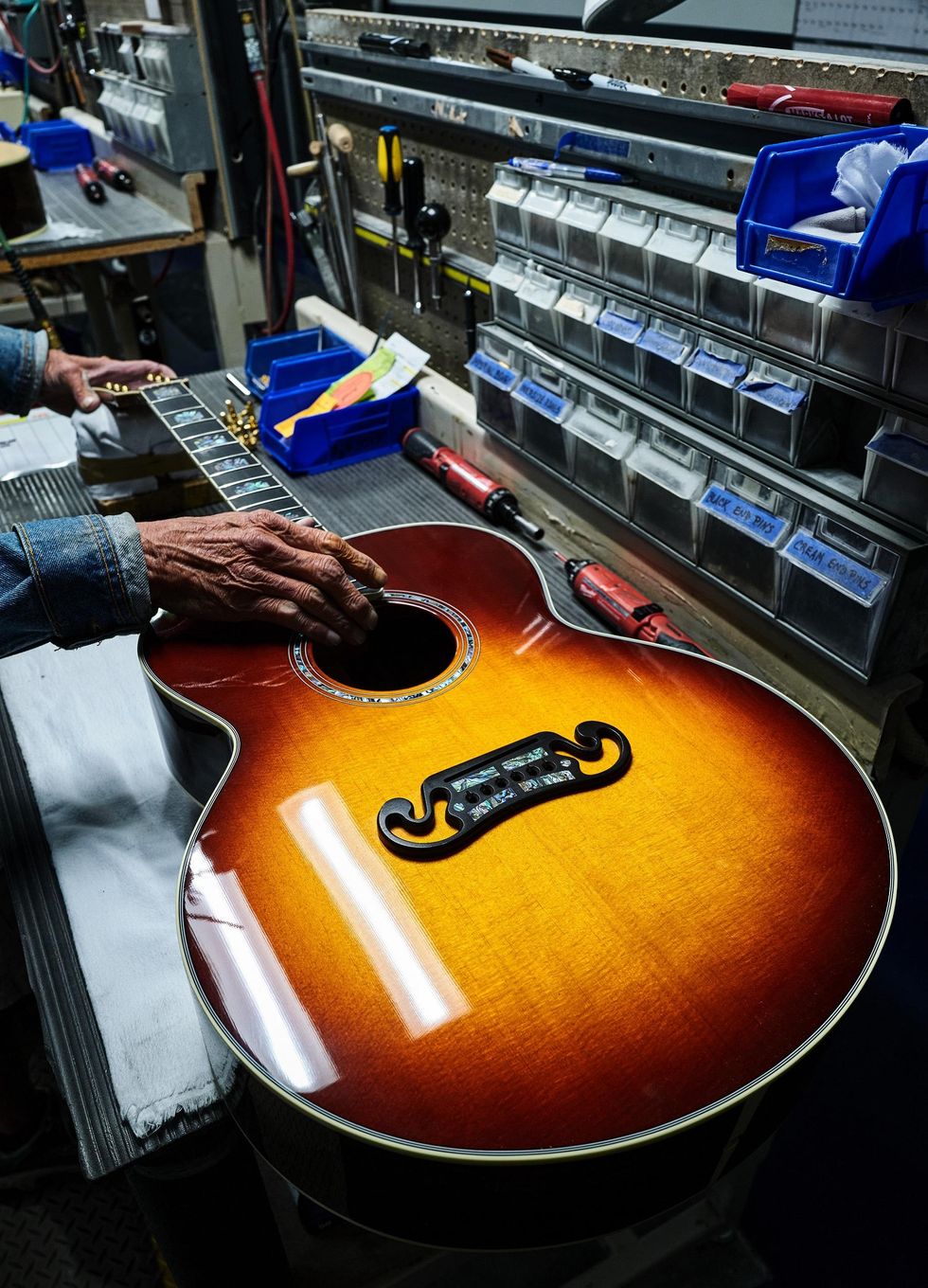“Once the first one’s done, I lose all interest,” George Alessandro tells me. A classic problem solver’s reaction to a challenge—in this case, designing some of the world’s most high-profile boutique amps.
Standing in his workshop, I see the evidence of the legendary amp guru’s current puzzle, the AZZ line. Alessandro is working out the finer details of some updates on the 100-watt AZZ head. His 50-watt 1/2 AZZ—fractions designate the power of the model, with the 1/4 and 2/5 also available, and plans for a 1/8 in the works—is probably the most visible these days, accompanying Derek Trucks around the country onstage.
“George has been working on my amps for years,” Trucks says, “and has always been willing to experiment and help us chase down our sound.”
Like Leo Fender and Jimmy Bryant—or whichever builder/player pair you choose—these two masters of their crafts share a mutually beneficial relationship. “Trucks is one of the best examples of how, when I do my job right, I can literally watch the artist in real-time, the first time they’re playing it live, open up and go places I’ve never seen before,” Alessandro says.
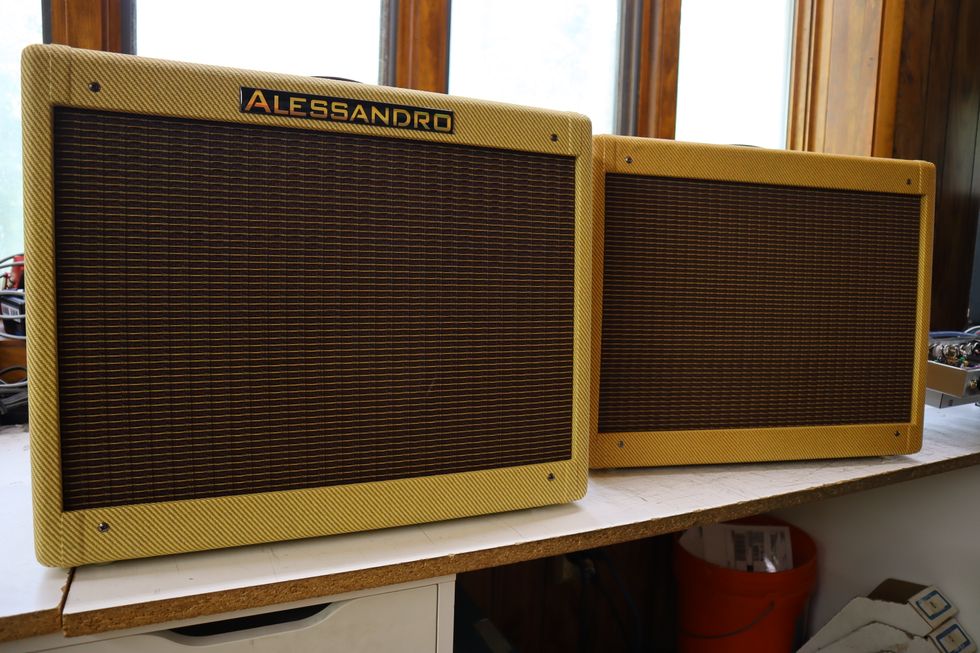
Alessandro’s Tweedle A—a tweed-inspired combo named in homage to Dumble—sits at left, next to a custom-order tweed Deluxe build.
Photo by Nick Millevoi
The 1/2 AZZ is, in part, a result of their collaboration. The slide maestro, whose Super Reverbs have spent time on Alessandro’s bench, helped the builder guide the development of the amp. “He’s been a guinea pig for some of the designs—the ones that he needed,” Alessandro elaborates. “I was developing it around him. With the tier that [Tedeschi Trucks Band] are on right now, they’re trying to push the envelope. Developing the 1/2 AZZ for him, we were finding limitations of the platform. He helped me find a couple things that I, as a mortal human being, could never find. But for him, as one of the gods, it took us a while to find all the boundaries. If I can make it a limitless journey, then I did my job right.”
Hanging out in Alessandro’s Bucks County, Pennsylvania, workshop is an immersive thing, an opportunity to experience the whole story. Here, I get the chance to take the AZZ v2 for a spin. Loaded with four 5881s and running through a pair of vintage Marshall cabs, this thing is a true powerhouse.
Plugging into the amp using a pair of vintage SGs—to say something like “expertly set up” wouldn’t even tell the story; both of these things just really, really rip—my head is exploding. And that’s not because it’s loud, which, of course, it is. But this rig is extraordinarily dynamic and sensitive to every little pick and finger nuance I offer it. It’s a lithe beast, ready to amplify and accentuate anything I give it. And it’s quiet at idle, so I can sit here and intermittently chat while I pick lightly and have a normal conversation, and then dig in and I’m back at full volume, practically levitating on a bed of gain, always with a vibrant, full-bodied tone that makes me want to sell all my other amps and commit to this rig for life. If only I thought any gig I ever play would allow me to throw a full stack on their stage….
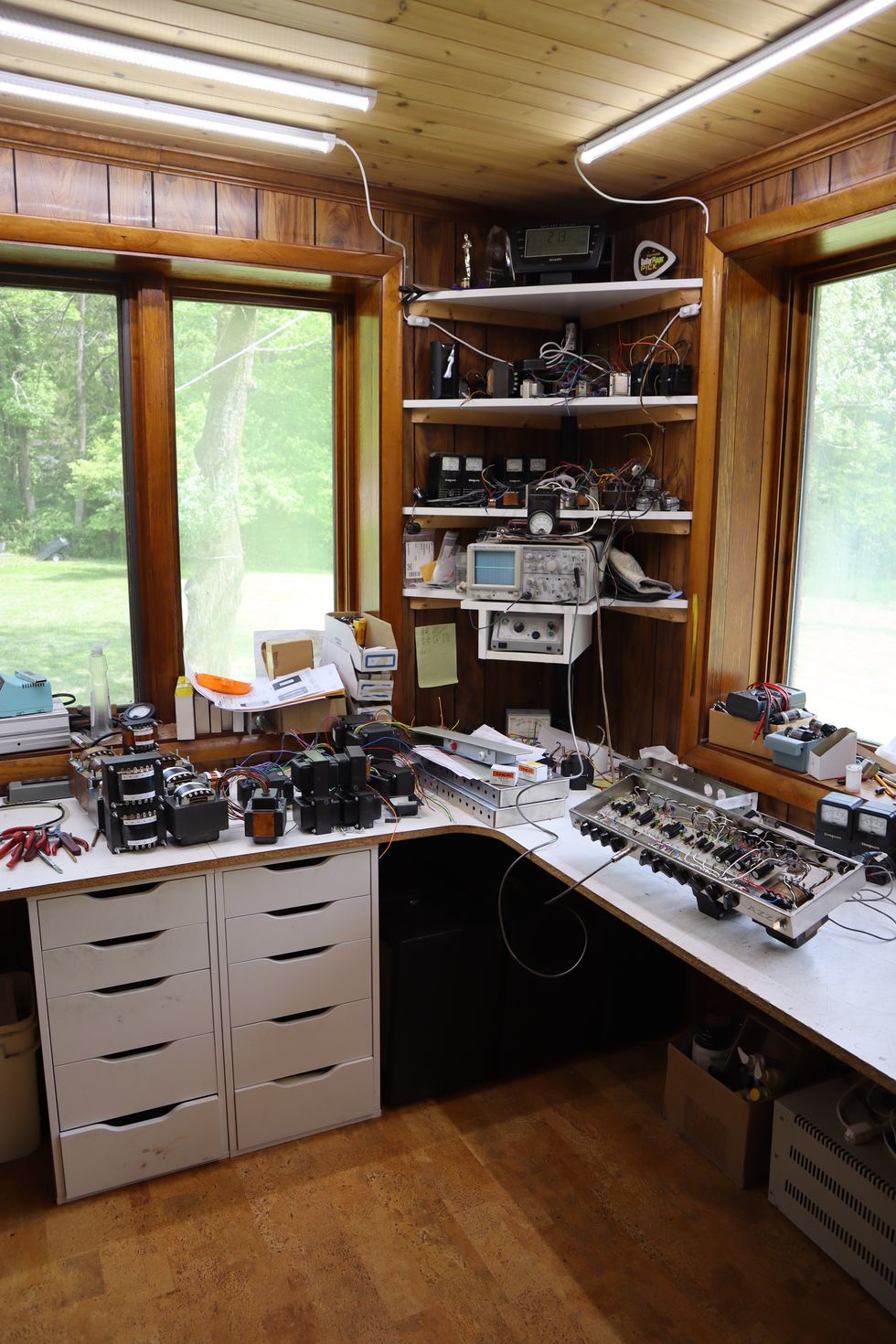
One corner of Alessandro’s workshop, where the 1/2 AZZ v2 is warming up near a pile of transformers.
Photo by Nick Millevoi
Next to the AZZ, I plug into Alessandro’s take on a tweed Deluxe. He figured that circuit out long ago, but he’s still excited about the classic designs. While he doesn’t typically build these, this one is a custom order from a client—I get the feeling he can’t say no to digging into an old circuit—and it’s loaded with the Eminence Eric Johnson EJ1250 that Alessandro co-designed. Just like a 5E3, it’s louder than it looks. And just like a 5E3, it does the saggy Neil Young thing everyone playing this circuit should aspire to. Basically, this sounds exactly like a 5E3, with—just maybe, because I’m not A/B-ing—a little more punch. In fact, I’d venture that this is probably how a new tweed Deluxe sounded back in the ’50s.
So, that thing he told me up at the top, about losing interest once he’s built an amp? It’s simply not true. I mean, I’m not calling George a liar—he’s a forward-thinking dude, and that’s what he’s imparting. But he essentially has the AZZ line figured out, and definitely learned everything there is to learn about the tweed Deluxe long ago, and he’s still thrilled about both, and much more.
Tedeschi Trucks Band - Layla (Live at LOCKN' / 2019) (Official Music Video)
Derek Trucks and Doyle Bramhall II reach for the sky with a pair of Alessandro 1/2 AZZs close at hand during Tedeschi Trucks Band’s Layla Revisited (Live at LOCKN’) concert.
High-End Reputation
“Buy my amps before I die!” Alessandro jokingly exhorted as I entered his workshop. He’d just gotten off a call where he learned about the recent astronomical sale price of a Trainwreck amp built by his late friend and mentor, the legendary Ken Fisher.
Alessandro is sensitive about not overstating his relationship with Fisher. “He saw something in me,” he says. “I don’t want to say took me under his wing, but he was very kind and gracious. It was an opportunity I relish and I appreciate having him in my life.” As Alessandro tells it, their meeting came at just the right time, and it was Fisher who gave Alessandro the push he needed.
Growing up in the Philadelphia burbs during the ’80s as an SRV-obsessed teenager, Alessandro purchased a ’59 Bassman that “just wasn’t happening.” He took it to a few area techs, all returning it with the same result. But “I was just getting into learning electronics,” he remembers, so he opened it up and realized that a broken capacitor had eluded each of the techs. “I changed that one part out and the amp came to life.”
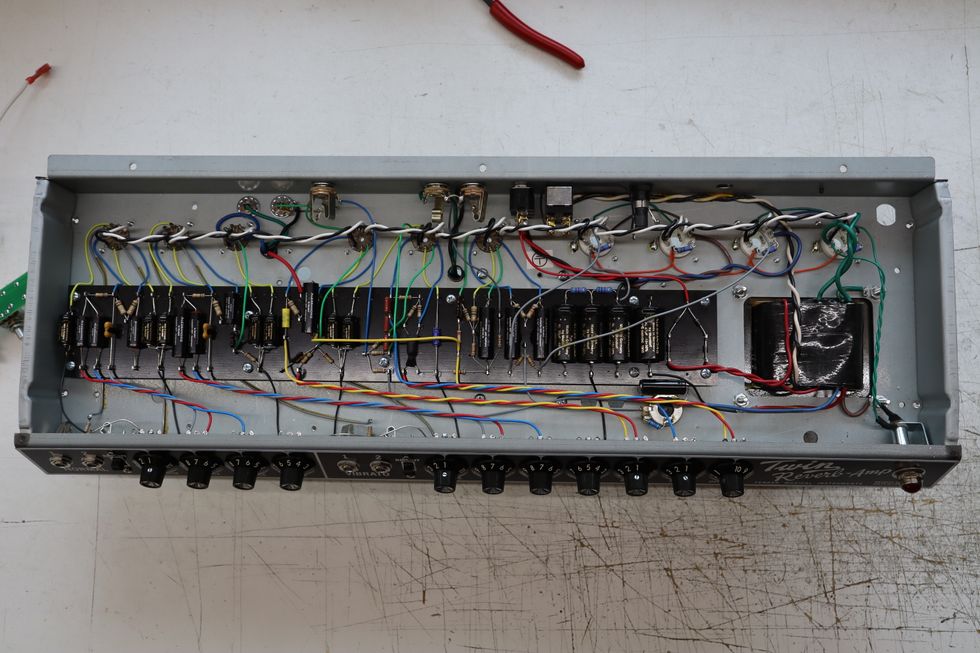
An example of one of Alessandro’s handwired Twin Reverbs, with visibly meticulous wiring and Alessandro-branded components.
Photo by Nick Millevoi
That was all Alessandro needed to catch the bug, and he started tinkering with old amps, soon doing repairs for local players. This experience served as a deep educational phase, and the timing was kismet. “There’s a whole learning curve on how amps age,” he observes. “What happens to a ’59 Bassman at year 20, at year 40, at year 60? I was of the generation where I came in on year 25, so I was coming in when it was a perfect time to learn.”
Eventually, one of his early clients inspired him to build an amp of his own. The request was to put an extra gain stage into a black-panel Bassman. After trying it in his client’s amp, Alessandro decided to build this circuit from scratch in the chassis of a Sunn Solarus. This build became his first prototype, which he called the Hound Dog Redbone.
A pre-med student working on amps in his free time, Alessandro took the amp to Fisher’s house for their first meeting, and they hit it off. It wasn’t long before Fisher gave him his first taste of hype. “He got me my first press,” he remembers. “He was writing for Vintage Guitar and basically said this Hound Dog is the closest thing to a Trainwreck. And from that point, my phone never stopped ringing for two years. I had orders coming in from all over the world before I was even a company.”
As he graduated from college, he looked at his potential spend on medical school and compared it to the auspicious start of his fledgling amp business, and decided to make a go at the latter. When he developed his second Hound Dog model—another “brutal 50-watter”—Alessandro tipped his cap to the elder builder, naming it the Bloodhound, after Fisher’s dog. He soon developed a full line, also including high-end low-power heads.
Somewhere along the way there was a cease-and-desist for the Hound Dog name, but Alessandro got some sage advice. “Bob Benedetto took me aside,” he explains. “He was like, ‘George, you’re Italian, you have a great last name, why don’t you use it?’” Thus, Alessandro High-End Products was born, reflecting his growing interest in hi-fi audio.
“When I started hearing what high-end audio sounded like, it was a mind-opening experience.”
“When I started hearing what high-end audio sounded like,” he explains, “it was a mind-opening experience. By utilizing better materials properly, you could elevate the product.” That included everything from building hi-fi style transformers, to eventually using his own Alessandro-branded components.
He developed a reputation for meticulously building amps at the highest level that quickly spread to the most elite circles in the guitar universe. Early adopters included Sammy Hagar, Billy Gibbons, and Eric Johnson. Just above his workshop desk hangs a photo of the builder and B.B. King, who he says was a good friend, both holding up an Alessandro catalog at his 30th birthday party. And at this point, the list has grown to be quite extensive. It’s not hard to find one of Alessandro’s amps onstage or in the studio with any number of rock stars, from Joe Perry to John Mayer to David Gilmour. And when I ask George about Gilmour’s very visible use of his Bluetick and Redbone Special, he shows me another photo on his desk of the Pink Floyd guitarist and his Alessandros sitting in with Jeff Beck.
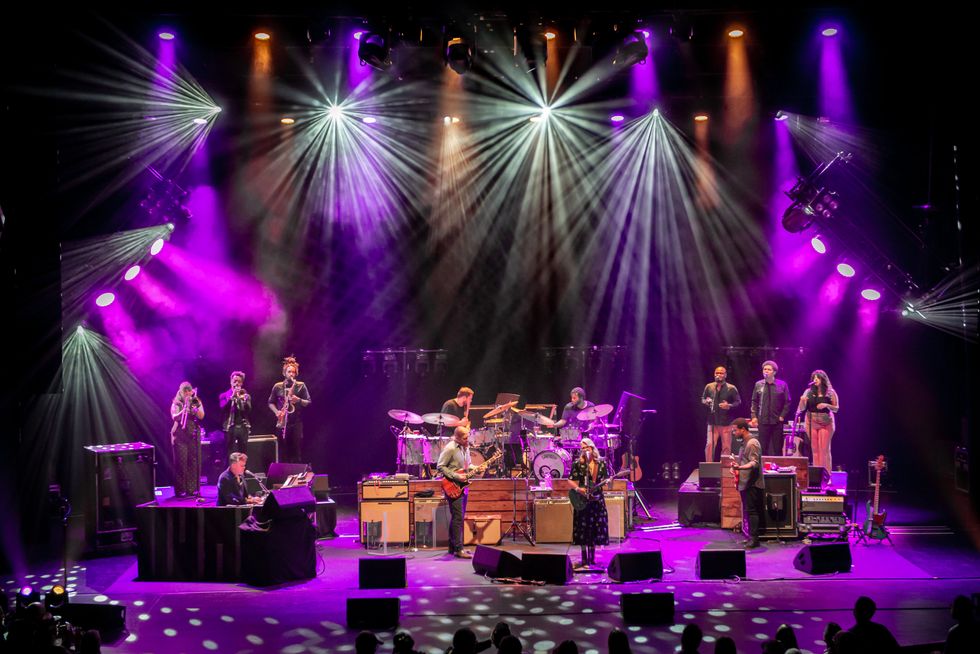
Onstage with the Tedeschi Trucks Band, Derek Trucks rocks a 1/2 AZZ and Crossbreed. Both Derek and Susan Tedeschi are running Super Reverbs that have spent time on the builder’s bench and are loaded with Alessandro’s signature Eminence speakers.
Photo by Stuart Levine
Handwired Access
My field trip to the Alessandro workshop wasn’t my first exposure to George’s work. Growing up in Philly, I was lucky enough to count hanging out at a small, family-owned guitar store as one of my first jobs. A few select customers would come in and talk about a guy a few towns over who was doing work for Gilmour and Eric Johnson, and who would put an amp in a gold-plated chassis for the price of a small sedan. My curiosity was piqued. When he introduced his old Working Dog line, targeted at gigging musicians, the amps came through the store and I plugged into the first boutique models I’d ever tried. Despite their reasonable prices, they were still out of my reach, but I never forgot that first taste.
As I got deeper into amps, and vintage amps specifically, I cycled through all the local techs—just like George did in the ’80s. I’d always known he was there, but the high-end Alessandro clientele led me to assume he was off limits for repairs, or at least prohibitively expensive. It was only recently, when I became a client myself, that I learned how wrong I was.While it’s partially Alessandro’s love of vintage amps that keeps him available for repairs and restorations, he also wants to work for working musicians at all levels, including those who can’t afford or justify a high-end amp (or at least one that commands five figures). “I definitely want to be approachable for any level of musician to purchase our product,” he tells me. “Because I do want to be able to inspire and get a good product into the hands of younger musicians or working musicians.”
To do so, he’s come up with a clever way to make his work more accessible, and that’s his handwire service.
The concept is simple: A customer brings Alessandro a modern consumer-grade amp—a reissue Fender or Marshall—and he’ll rebuild it by hand. He explains that his goal is “to at least equal what Fender was doing in 1964 and ’65. But if I can, what would happen if they continued to evolve it?”
And while he could build that from scratch easily, the rebuild concept is pragmatic. “I can’t build from scratch what we offer with the handwire service.”
So, he’s designed a circuit board that’s easily reproducible. “We gut the whole thing. The only thing left in there is the transformers and tube sockets—it’s very efficient.” And it keeps costs down. So, starting at $525 for a Princeton Reverb—you can, of course, keep upgrading beyond that—you can have a handwired amp that Alessandro says he’ll “put up against a vintage Princeton Reverb any day.”
“I definitely want to be approachable for any level of musician to purchase our product. Because I do want to be able to inspire and get a good product into the hands of younger musicians or working musicians.”
David Gilmour - Time/Breathe (Reprise) (Live At Pompeii)
Is there really any better way to make a case for a great amp than seeing a video of David Gilmour playing it at Pompeii? Here he is from 2017’s Live at Pompeii with a pair of Alessandro heads behind him in the hazy distance.
And that’s not sales talk. Frankly, George doesn’t have time for that. Just talking to him, it’s clear he only spends time on stuff he’s into, and lets his reputation do the rest. Take a look at his website, for example. It’s a sparse landing pad, featuring some information about most of what Alessandro High-End Products has to offer. If it feels like maybe there’s more available than you see, that just might be the case.
The Alessandro social media pages are a better way to see what he’s up to, but their long scroll of amp demo videos still maintain the mystique around his work. Of course, we, as tone hunters, absolutely love our elite-level amp builders to have mystique around their work, and that’s the level Alessandro is working on.
If you really want to know what George can offer and maybe find out if you can afford one of his amps, or even just talk about whether that’s right for you, you’ll have to go right to the source and have a conversation.
And how does someone do that?
He says, simply, “The people who need to know me find me.”


